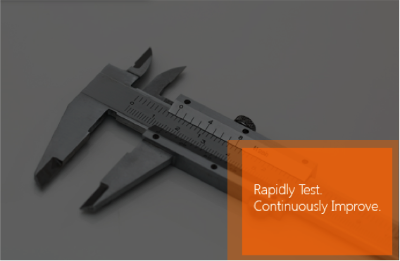What’s the big deal with MVPs (Minimum Viable Product)?
The concept of Minimum Viable Product has been around for quite some time now. But no matter how long it has been, I often sense a confusion about the term or hear “What’s the big deal” about it from business leaders.
In its essence, MVP will help you jump-start the process of learning as quickly as you can about the users interest in your product.
Most product design in traditional UX Design model, begin with a “Big-Picture Mapping of the Journey and Destination”. But no matter how thoughtful your plan is, the product might fail the moment the journey goes underway.
MVP is therefore about keeping the big picture in mind, but as far as the details go, it’s about small continuous steps toward the destination, measurement of the progress, making any necessary amends, and delivering the product.
As simple as it may sound, designing MVPs is possibly one of the best measures of how skilled you are as an UX designer. It is truly a craft in itself that requires applying all design practices and principles ever known – from Agile UX to Design Thinking.
Here’s a bit of untangling to weed out the MVP and UX Conundrum in a product design.
Augment The Hypothesis

A new product idea is based on assumptions. We often have a hard time letting go of product idea we have fallen in love with. It might look good on paper and the work put into its design might be substantial, but it does not make it a solid foundation to craft new businesses from.
To ensure that your product delivers value to customers, entices them to pay for the value, and converts those payments to profit you need to formulate testable hypotheses around the riskiest assumptions, such as “ The new product will address this particular concern for the user” or something as simple as “My To-Be-Product will be bought for x$”. Formulate the hypothesis and move towards an abstract world of modelling ideas, where you conceptualize the problem and put it in simpler terms.
Start With Simple Design to Validate the Hypotheses

Now that we’ve made the hypothesis to connect the problem you’re trying to solve to the product you’re trying to build, start with a simple design to validate it. MVP may be as simple as a single button for users to click. It may be just a command line interface with no GUI at all. Or it may be the low-fidelity prototype.
For a traditional UX designer to gear up and focus on such intermittent releases is often harder while they are accustomed to designing the entire feature set at one-go. But following this approach, will draw you closer towards your overall product vision.
Realise that Faster Time to Market is the #1 Opportunity

The first mover advantage is a key requirement for companies in highly competitive markets.
While there isn’t a specific amount of time within which you should ship an MVP, the more time it takes to complete, the less valuable it becomes.
An MVP is about designing and engineering a lean, powerful product which creates a viral effect for your ideas. This is where all the Agile UX practices become so important, one that helps you leverage several tools across the product lifecycle to ship faster and make continuous improvements.
Rapidly Test. Continuously Improve.

The test you design must validate the degree to which your hypothesis was accurate. One that will determine if the product you’ve created will solve the problem you thought existed. Some simple questions like, Are the users willing to pay for it? If yes, how much did they say they’d pay? If no, would they be willing to use the product if it were free or they simply don’t find the product useful at all? etc., will give an array of opportunities to capitalize on.
To ship products that your users love, every step along the product design journey should be approached as if it were an MVP.
If you are still underwhelmed with this whole idea of an MVP and its implications, here are few pioneers who have done it right.
Bridging the Digital vs Physical Divide

When people were not used to the idea of buying shoes online, way back in 1999 Nick Swinmurn wanted to build an online retail that stocked a variety of selection of shoes. Swinmurn began by putting up photos of shoes from local stores on a website to generate demand for an online store. When someone ordered shoes online, he would go back to the store, buy it and ship it to the customer. This wizard-of-Oz MVP strategy helped Swinmurn test the hypothesis and understand that the customers were ready and willing to buy shoes online.
Creating a New User Behavior

A few years back, travelers would rarely stay at strangers‘ apartments in a new city. But, AirBnB brought in a new behavior.
Brian Chesky and Joe Gebbia had their “light-bulb moment” in 2007, when they wanted to start their own business in a time when they couldn’t even afford their San Francisco apartment rent. They decided to open up their apartment as cheap accommodation for attendees of a design conference happening in San Francisco at the time. They posted pictures of their apartment in a simple website. This concierge MVP that involves manually solving the customer’s problem with a simple front end website gave valuable insights on the expectations of a potential customer.
From a WordPress Blog to A Billion Dollar Business

Groupon showcases one of the most amazing example of a MVP. The company was literally started off as a customized wordpress blog called “The Daily Groupon”. They would post deals each day manually. When someone registered for a particular deal, the team would manually send a PDF document through apple mail. A wordpress blog and manually emailing PDF files isn’t really a scalable solution, but this piecemeal MVP helped them understand their market worth before building a giant machine.
Contemplating how to build an MVP? Follow my next blog for 7 Strategies to Design Your Minimum Viable Product.
This article was originally published on Linkedin








